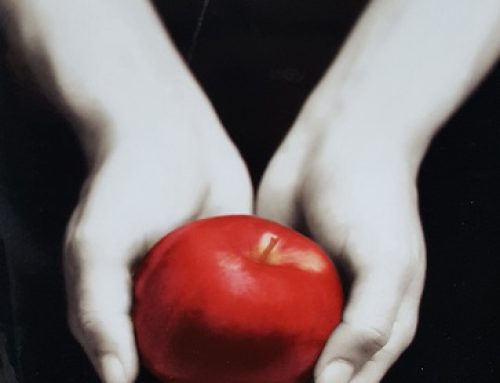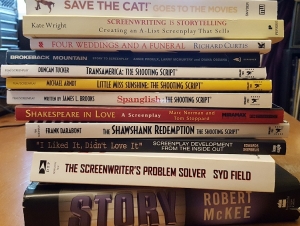by
Renée Lukas
 There’s been a battle cry, calling for more scripts with “strong women characters.” Some writers think that means more women superheroes, or bad ass women with more body armor and an arsenal of weapons that would put Arnold Schwarzenegger to shame.
There’s been a battle cry, calling for more scripts with “strong women characters.” Some writers think that means more women superheroes, or bad ass women with more body armor and an arsenal of weapons that would put Arnold Schwarzenegger to shame.
But is that really what is meant by “strong women characters”? To quote The Princess Bride, I do not think it means what you think it means.
Let’s start with the phrase “strong women characters,” which makes “women” the adjective. Let’s instead say “strong characters that happen to be women.” Think about that—strong characters first.
Don’t get me wrong. I love seeing Linda Hamilton as Sarah Connor kicking a terminator’s ass as much as the next person. But “strong” when referring to a character, means one whose actions affect the plot.
When female roles consist only of being the supportive wife or girlfriend to the man at the center of the action, she could easily be cut from the script and it wouldn’t change the story. Use that as a test for your next script. Can you cut her out, and it makes no difference? A strong character has to be vital to the story.
What is a strong character?
In addition to shaping the plot, a strong character is one you’ll remember long after the credits roll. After watching The Devil Wears Prada, I had nightmares about working for Miranda Priestly.
How do you write a strong female character?
The same way you write a strong male character. Give her flaws, contradictions, personality traits you’ve surely run across in your own life.
Annie in The Horse Whisperer presents a confident, take-charge exterior. Then you realize that on the inside, she’s scared to death of making the wrong decisions, especially concerning her daughter.
Give her a transformation, or an arc. Thelma in Thelma & Louise begins as a timid housewife who transforms into an outlaw who can never go back to the person she was before.
Eugenia “Skeeter” in The Help gradually realizes she’s outgrown her racist friends and discovers a purpose beyond the confines of her upbringing.
Celie in The Color Purple endures years of domestic abuse before finding her voice and her strength.
The character you write should have some complexity to make her worth getting to know for two hours. A one-dimensional female whose only purpose is to be a decorative ornament in a strip club scene is NOT the kind of character I’m talking about. And if you write another strip club scene with pole dancers in the background while the men talk about the important things. . . may you burn in hell.
Remember, contrary to some self-help books, women are not a different species. We do not speak in some odd language that’s limited to shoes and menstrual cramps.
Women in action films
The trend to have more women at the center of the action is great, but that doesn’t have to be the only genre where change can be made. Many well-meaning advocates for women in film have suggested simply changing a male character’s name in a screenplay to a woman’s as a solution to the visibility issue (Example: Sandra Bullock as the protagonist in Gravity). This is fine in some cases, but it also misses the point. A woman’s perspective is as important to the role as filling a quota with a female human.
If you think about it, women are often socialized in a way that leads to many interesting contradictions. We’re taught to consider others’ feelings at the expense of our own. We’re encouraged to have goals, but not to be too selfish. There’s a sort of twisted mixed message for ambitious women, even in 2020: Ambition is good, but there’s something suspect about a woman who seeks great power, say, the Oval Office. Why? Then there are messages girls get from day one: Your looks are important, but what’s on the inside should be more important. Is it? Is that the way society REALLY behaves toward pretty or average-looking women? There’s so much fertile ground to explore, and it doesn’t even have to be the subject of a film, but against that backdrop, there are plenty of amazing characters to create!
Examples of strong women in film
For those who struggle to write interesting women in genres other than action, I’ve provided some examples. These are strong characters who are women, and who are not in combat scenes:
Betty (Helen Mirren) in The Good Liar. This innocent widow wasn’t who she appeared to be. And her backstory is loaded with layers and dark, yet understandable, motivation.
Judy (Renee Zellweger) in Judy. The title role gave us a glimpse into the darker side of fame, a woman who was beloved and who struggled to maintain a balance between herself in life and on the stage.
Grace (Sigourney Weaver) in Avatar. She’s passionate about science, but she has to constantly defend her work to the men who control the funding she needs.
Erin Brockovich (Julia Roberts), the title character. She was a desperate single mother, struggling to support her kids, and discovered her street smarts were the key to bringing down a multi-million dollar corporation.
Karen (Meryl Streep) in Silkwood. An ordinary woman living with her boyfriend who becomes a whistle blower about the radiation dangers at the plant where she works. She decides it’s worth the risk to uncover the truth.
Loretta (Cher) Moonstruck. Superstitious and practical to a fault, she’s going to marry not for love, but to avoid bad luck. When she falls in love, she has to fight her own stubborn beliefs and just go for it.
Carol (Cate Blanchett), the title character. How difficult must it have been to realize you’re a lesbian in the 1950s and be willing to give up your picture-perfect family–husband and daughter–to live an authentic life?
Katherine Johnson, Dorothy Vaughan, Mary Jackson (Taraji P. Henson, Octavia Spencer, Janelle Monae) in Hidden Figures. Each woman was different, obviously, but struggled against racism and sexism while pursuing goals, which were usually associated with men, working at NASA.
In the Oscar winning film, Parasite, the women are virtuous, conniving, selfish, ambitious—all of those qualities that can be attributed to the men in the same story. The flaws in both genders make the story more real and believable.
Note: Some of these “characters” are based on real-life women, further proof that women have more to offer than being a token prostitute on screen.
A few more tips on writing strong women
I hope this list inspires you and sparks your creativity, maybe even prompts a rewrite of the female characters in your current script.
Last but not least, when you set out to write a female character, think of the women you already know. Chances are, they’re not either a saint or a whore. Those are the two most popular categories, which, to me, defy logic. If those are the only types of women you can write, I’d seriously question the strength of your imagination and maybe encourage you to switch professions.
When you think about women you know, think of all the personality traits they have that can make your characters more engaging, infuriating, beguiling. Make lists. Choose traits that can strengthen the plot either by clarifying a protagonist’s goal or causing trouble and more conflict.
Finally, think about your favorite films and/or characters. Ask yourself why you were compelled to watch a particular character, and keep that in mind as you create your own. Also, watch quality TV. The entire cast of Orange is the New Black is a case study in how to write multi-dimensional women.
I hope this helps. As always, good luck, and happy writing!


